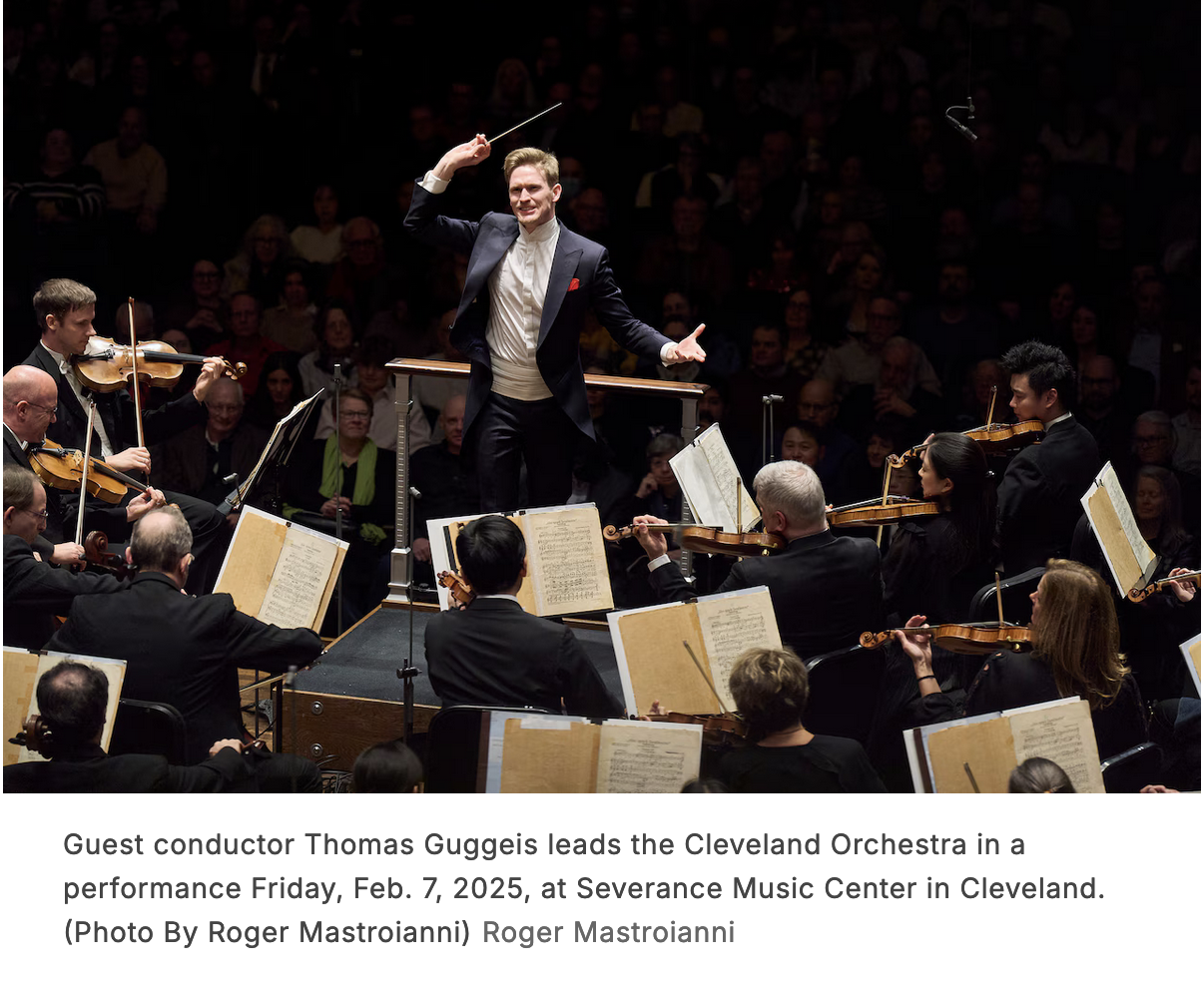by Peter Feher

CLEVELAND, Ohio — Richard Strauss must have suspected that he would always be mistaken for another composer. How else do you explain Also Sprach Zarathustra— the piece that contains his most famous minute-and-a-half of music, plus an extended homage to Johann Strauss Jr.?
The Cleveland Orchestra is playing up the Strauss connection this weekend with an extravagant concert program that borrows a bit from the style of the Waltz King. Although nothing by Johann Strauss Jr. is officially on the bill, his presence and flair are felt in Also Sprach Zarathustra and in the intoxicating sweep of Maurice Ravel’s La Valse.
The Orchestra’s performance on Friday, February 7, at Severance Music Center started strong and ended with real panache. Guest conductor Thomas Guggeis, the 31-year-old general music director of Oper Frankfurt — here making his U.S. orchestral debut — led sharp, highly stylized interpretations that would be equally at home on the continent or in Cleveland.
European civilization is both the catalyst and conundrum in “Also Sprach Zarathustra,” whether we’re talking Richard Strauss’ tone poem or Friedrich Nietzsche’s philosophical novel of the same name. Strauss was largely inspired by one particular idea from Nietzsche, the Übermensch (meaning something like “the most highly evolved man”). The score’s trajectory is intended to track with humanity’s idealized evolution — out of the harshness of nature, into the comforts of culture, and then beyond into a kind of elevated solitude.
Hence the elemental opening of Strauss’ work with those famous stark notes from the trumpets. Manmade systems soon emerge, and these different sections of the score met with varying success on Friday evening. The string chorale that represents organized religion was beautiful in its transparency. Each individual player found purpose within the collective whole, all underlaid by the sustaining sound of Severance’s organ. The fugue that follows, meant to represent the rigorous procedures of science, suffered from a lack of precision.
Strauss showed his sense of humor by selecting the Viennese waltz as the apotheosis of all human culture. Guggeis put a sarcastic bite on his conducting here, but this longest section of the piece never really took off — concertmaster Liyuan Xie played his solos flawlessly but in a far too understated manner.
The Orchestra would take on another waltz after intermission, but first came the dreamy interlude of Henri Dutilleux’s Tout un monde lointain… (“A whole distant world”). Principal cello Mark Kosower starred as the sensitive soloist, soaring into his instrument’s upper register for stretches of what seemed like suspended time. This demanding concerto by one of the 20th century’s foremost perfectionists requires a delicate touch, which Kosower and his colleagues maintained for 30 extraordinary minutes.
The cellist’s encore — the Gigue from J.S. Bach’s Cello Suite No. 3 — brought the evening back to dance.
The stage was then reset for a huge orchestra and the showstopping finale of La Valse, written in the aftermath of World War I amid great uncertainty. Ravel’s definitive take on a fading era’s favorite genre proved to be the perfect way to ring the curtain down.
Published on ClevelandClassical.com February 12, 2025.
Click here for a printable copy of this article



